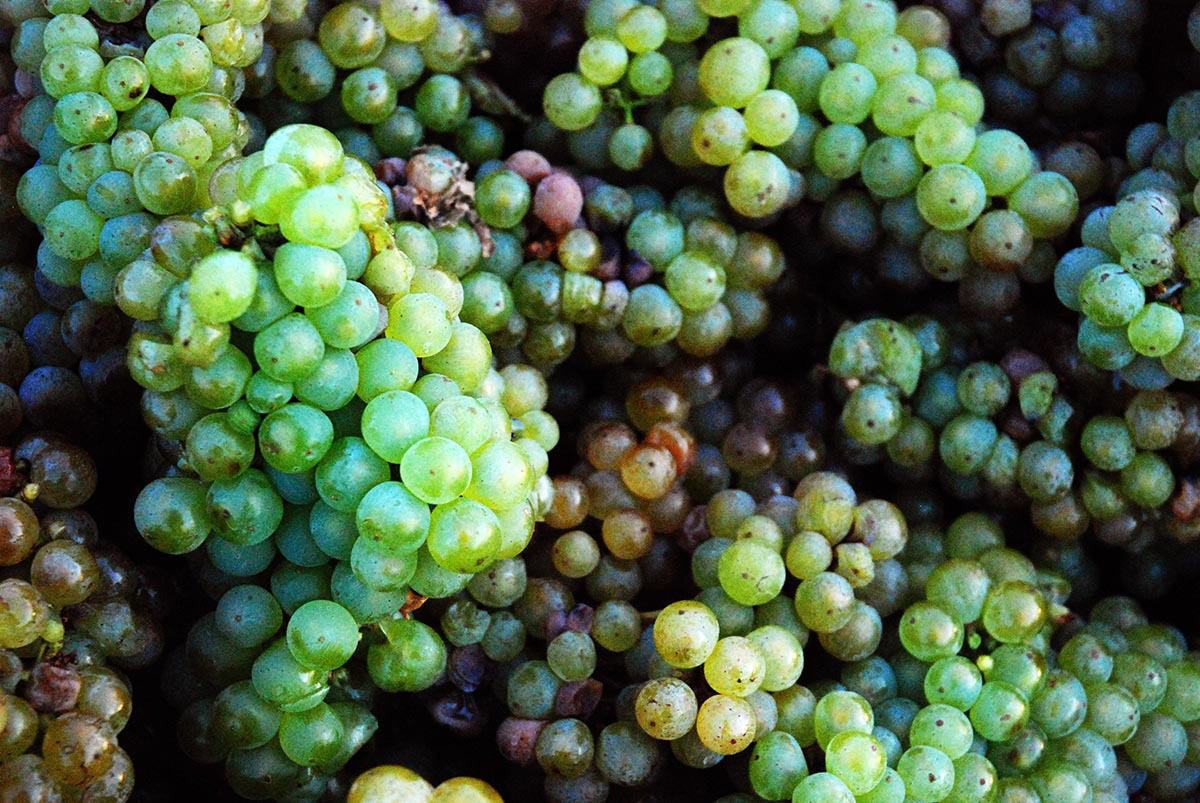Riesling, often hailed as the king of white wines, is renowned for its versatility, complexity, and ability to express terroir like no other grape variety. From dry to lusciously sweet, Riesling offers a spectrum of styles that cater to diverse palates and is “loved and respected” among wine enthusiasts and industry professionals.Yet, it is rarely a top pick for most wine drinkers. Let’s unlock the fascinating (and often underrated) world of Riesling, exploring its different styles and the factors that influence them as we boost this misfit grape up toward the spotlight it so heartily deserves.
Understanding the Styles of Riesling
The most obvious place to start when exploring the world of Riesling is to better understand its various sweetness levels. When offered a taste of Riesling, the most common assumption wine drinkers make is expecting a syrupy sweet wine. While some Riesling are undeniably sweet, believing all Riesling fit that description could not be further from the truth. The range of styles crafted from this versatile grape is wide and vast including expressions that are bone dry (i.e., not sweet at all), sparkling, and well balanced with both acidity and natural sugars.
With such a wide range of styles, how might an average wine drinker know what type of tasting experience to expect from a bottle of Riesling? Glad you asked!
The International Riesling Foundation (IRF) is a group of Riesling growers, winemakers, sommeliers, and wine buyers who intend to strengthen the reputation and approachability of Riesling. This group of devotees created the IRF Scale to help consumers better understand what type of tasting experience to expect when selecting a bottle of Riesling.

Due to the high level of natural acid in Riesling, the sweetness perceived by the taster is not exclusively linked to residual sugar (RS) levels. Although commonly used in Riesling descriptions, neither RS nor alcohol percentages are reliable metrics to determine the perceived sweetness level of Riesling. Instead, the sweetness designation on the IRF Scale is determined using an algorithm that takes into consideration four measurements: Residual Sugar (RS), Total Acidity (TA), and pH. Once values for each component are calculated, the IRF algorithm is used to determine how the average taster’s palate will perceive the sweetness of the Riesling within that bottle.
The IRF Scale is now on the back label of millions of Riesling bottles around the globe, adding confidence to consumer decisions and enjoyment.
Dry Riesling
Dry Riesling, often labeled as “trocken” in Germany, is characterized by crisp acidity, mineral-driven profile, and absence of residual sugar (i.e., sweetness). These wines showcase the pure expression of Riesling’s fruit flavors, ranging from zesty citrus to green apple and stone fruit. Dry Rieslings, also referred to as “bone-dry,” are versatile food wines, pairing beautifully with seafood, salads, and dishes highlighted by Asian flavor profiles. This is the category in which consumers will find most sparkling Rieslings, or “sekt.”
Medium-Dry Riesling
Medium-dry Riesling strikes a balance between sweetness and acidity, offering a touch of residual sugar that enhances the wine’s fruitiness and rounds out its profile. These wines tend to exhibit flavors of ripe orchard fruits, honey, and floral notes, with a refreshing acidity that keeps them vibrant on the palate. Medium-dry Rieslings, often called “off-dry,” are excellent companions to a variety of cuisines, from Asian dishes to creamy cheeses and poultry.
Medium-Sweet Riesling
Medium-sweet Riesling, also known as “halbtrocken” in Germany, presents a slightly sweeter profile than medium-dry Riesling, with more noticeable residual sugar. These wines are characterized by their luscious texture, ripe fruit flavors, and aromatic complexity. Medium-sweet Rieslings pair wonderfully with spicy foods, rich sauces, and fruity desserts, offering a harmonious balance of sweetness and acidity.
Sweet Riesling
Sweet Riesling, often labeled as “spätlese” or “auslese” in Germany, represents the pinnacle of Riesling’s sweetness spectrum. These wines boast intense flavors of ripe stone fruits, tropical fruits, and honey, with a luxurious mouthfeel and lingering finish. Sweet Rieslings are exquisite dessert wines, pairing elegantly with foie gras, fruit tarts, and blue cheeses.

Factors Influencing Riesling Styles
- Terroir: Terroir, encompassing factors such as climate, soil, and topography, plays a pivotal role in shaping the style of Riesling. Cool-climate regions like Germany’s Mosel Valley and the Finger Lakes region in New York produce crisp, acidic Rieslings with pronounced minerality, while warmer regions like Australia’s Clare Valley yield riper, more fruit-forward expressions. Soil is another factor of terroir that deeply influences Riesling. Oregon’s Willamette Valley provides excellent examples with its marine sedimentary soils producing ripe stone fruit characteristics, volcanic soils encouraging bright citrus notes, and wind-blown silt ushering in vibrant tropical profiles.
- Ripeness Levels: The ripeness level of Riesling grapes at harvest significantly impacts the wine’s sweetness and flavor profile. Grapes harvested early result in dry or medium-dry wines with high acidity and citrusy flavors, while late-harvested grapes develop higher sugar levels, leading to sweeter, more luscious wines.
- Residual Sugar: The decision to ferment Riesling to dryness or retain residual sugar (RS) is a crucial factor in determining the wine’s style. Winemakers can halt fermentation to leave varying levels of sweetness in the finished wine, from dry to intensely sweet, catering to different consumer preferences. Ice wine production methods also impact RS levels in Riesling and create unctuous, decadent dessert wine to pair with sharp cheese and sweet treats.
- Winemaking Techniques: Winemaking techniques, such as fermentation temperature, yeast selection, and aging vessels, can influence the style of Riesling. Stainless steel fermentation preserves the wine’s fresh fruit flavors and crisp acidity. Oak aging imparts additional complexity and texture, often found in richer, more full-bodied Rieslings.
- Winemaker’s Preference: Ultimately, the winemaker’s vision and stylistic preferences play a significant role in shaping the final expression of Riesling. Some winemakers aim to preserve the grape’s natural acidity and purity of fruit, while others may opt for extended skin contact or barrel aging to impart additional complexity and structure.
Riesling’s diversity of styles is a testament to its adaptability and the myriad influences that shape its character. Whether you prefer dry and zesty or lusciously sweet and aromatic, there’s a Riesling style to suit every palate and occasion. By understanding the factors that impact Riesling’s different styles, wine enthusiasts can further appreciate the complexity and versatility of this noble grape variety.
